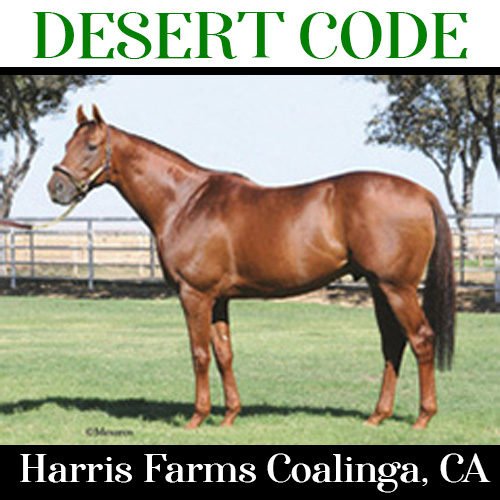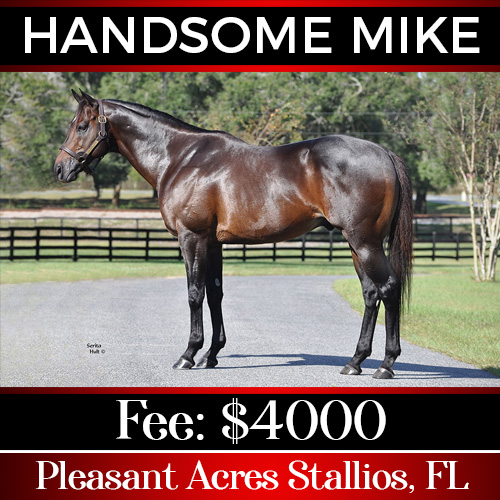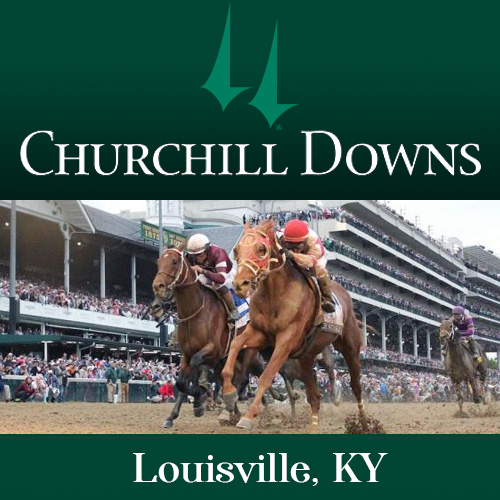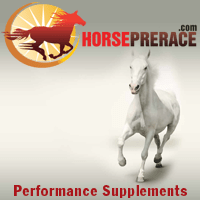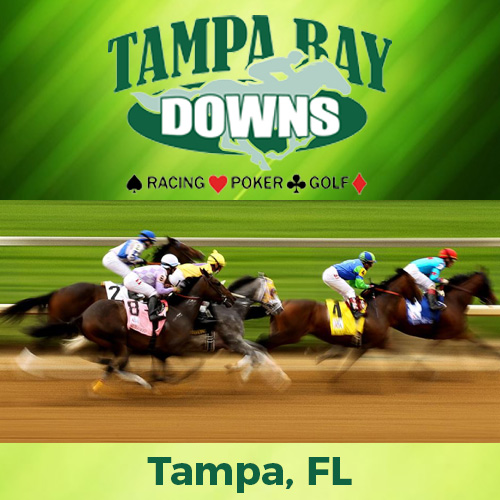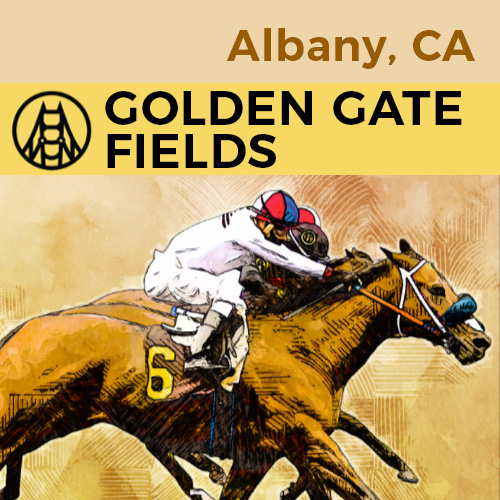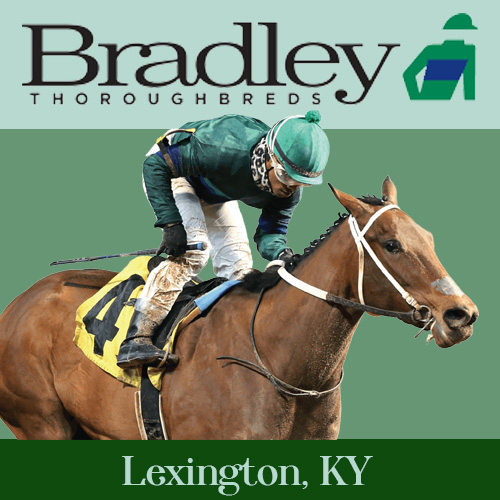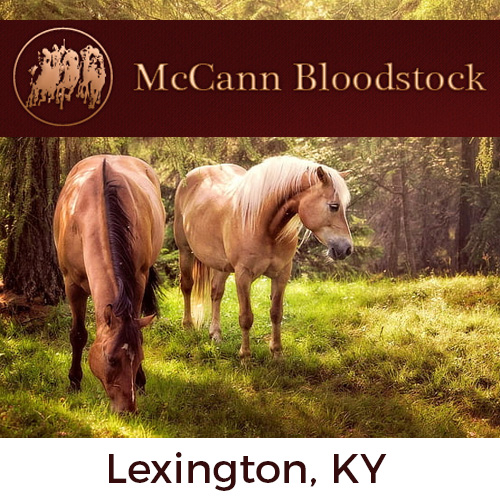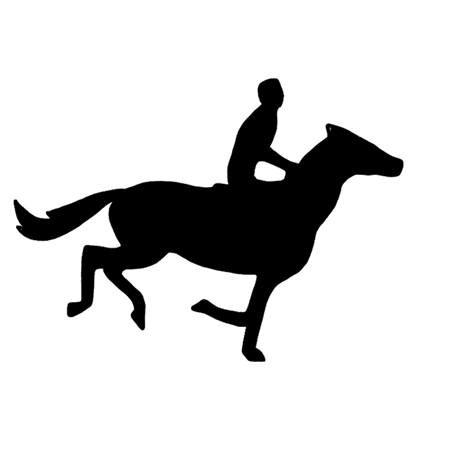The Interviews: Former Professional Baseball Player Now Trainer, Frank Lucarelli
In 1979 Frank Lucarelli left the world of professional baseball to start a career as a racehorse trainer. Currently running a diverse operation racing horses each year in Washington, California and Arizona, Frank has now trained over 1500 winners. Frank talked to us about his training, some of the horses that have been through his hands and his views on the current state of thoroughbred racing in California and the Pacific North West.
TBP: Frank how did you get interested in horse racing?
FL: My dad owned horses, not many just one at a time or so, just cheaper claimers for some fun and interest and as a kid when I was 8 or 9 years old I used to go to the Longacres track in Washington with him. My dad was at the track just about every day, he had his own box and I would go at weekends when I wasn't at school. I loved it straightaway, it was great.
TBP: What was your first experience of working with racehorses?
FL: As a kid when I was still at school my Dad's trainer, Neil Knapp hired me part time, so I worked cleaning stalls and walking hots. Neil is actually still training up there, he's a great horseman. I started grooming horses when I was fourteen in the school holidays.
TBP: This was in the '70s, who were some of the top riders at Longacres in those days?
FL: The main guys were riders like Lenny Knowles, Tex Hollingsworth, Paul Fry and Larry Pearce, they were good solid jockeys.
TBP: How was business at Longacres at that time?
FL: Longacres was booming, as was thoroughbred racing in Washington in general. There was a thriving Washington breeding industry too, they raced five days a week. There was a big horse population, the back stretch was full and I could hardly get stalls there. If I applied for six or eight stalls I might get two, if you put in for twenty you might get six or eight, so you had to apply for stalls at the training centers that were in the area, places like Riva Ranch, Cedar Downs. The training centers would have 150-200 stalls with a training track and authorized official clockers coming in once or twice a week.
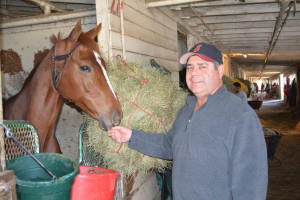 TBP: How did you get started training on your own?
TBP: How did you get started training on your own?
FL: After I left school I went to college for three years and then played baseball as a professional. After I got released from baseball in 1979 I went straight to the track and applied for my trainer's licence. I had all that experience working part time at the track as a kid so I passed the trainer's test ok, it was pretty straightforward, and I went to Portland Meadows that fall with one horse. Ed Moger Jr. who trains in California now is a good friend of mine who I have known since we went to high school as kids together, he had a good sized barn of horses there and he helped me out too. I got another couple of horses and did well with them and then got a few more and a couple of new clients, but it was a slow trickle over quite a few years before I had a decent sized barn. By the early nineties just before Longacres closed in 1992 I had built up to around twenty five head. Then Longacres closed and we moved to Yakima Meadows and things got tough, I lost several clients who didn't replace horses when they were claimed and I was back down to five or six horses. I was making ends meet by coming home and selling cars in the week and going back to Yakima for the races at the weekend. Then Emerald Downs opened in around 1995 and things started to get better and come around for me.
TBP: Tell us about your current training operation.
FL: My main barn is at Emerald Downs, I have forty to forty five head there and it's home base. Then I have a barn at Turf Paradise in Phoenix in Emerald's off season, and at Golden Gate Fields in Northern California in the winter too. I have some good help, I have assistants at Turf Paradise and Golden Gate and I
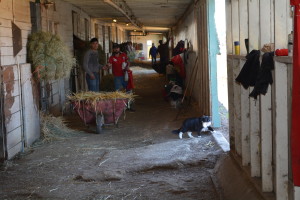 travel between the two tracks in the winter. When Emerald is running in the Spring, Summer and Fall I'll spend most of my time there, but I will keep a smaller operation at Golden Gate Fields going year round as there is no Turf track at Emerald and I'll have some horses who like to run on the turf or the Tapeta track at Golden Gate. So I have options and can split my horses up for where they fit best.
travel between the two tracks in the winter. When Emerald is running in the Spring, Summer and Fall I'll spend most of my time there, but I will keep a smaller operation at Golden Gate Fields going year round as there is no Turf track at Emerald and I'll have some horses who like to run on the turf or the Tapeta track at Golden Gate. So I have options and can split my horses up for where they fit best.
TBP: How do you like to train horses, do you have a particular style of training?
FL: I don't like to train my horses too hard, I like to give them nice easy works but I like them to have nice long strong gallop outs. Often a half mile work of mine will be more like a slow six or seven eighths work by the time they have finished galloping out. I was an athlete myself and I have a lot of friends who are athletes and like human athletes I think horses need to be kept busy doing something every day.
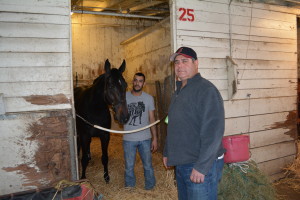 TBP: Do you think horses are more fragile now than when you started training, and what do you think about the medication debate?
TBP: Do you think horses are more fragile now than when you started training, and what do you think about the medication debate?
FL: I'm really not sure, I think injuries are always going to happen no matter what. I think there is a place for Lasix as long as it is administered correctly and not abused. I don't think it has a long term negative effect on the horse and I think if it goes away people will look for and find something else to replace it. I think Bute is acceptable in training too. All athletes, human and equine get aches and pains and need some help medication wise from time to time.
TBP: What aspects of training horses do you enjoy the most?
FL: I love claiming horses and moving them up, but I like to spot them a while before I claim them and that's a little tougher to do when I am moving around between barns so much. When I am at Emerald for several months it's less difficult as I can get a good line on a horse. I like to look for horses, for example, that are running at Emerald with turf breeding or an off pace stalking style that might be better suited by the turf or synthetic track at Golden Gate Fields. Or horses that are running at Golden Gate who have a ton of speed who are giving it up late, those horses at Emerald can get home and win.
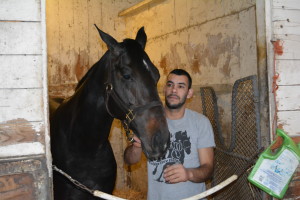 TBP: What parts of the job can you do without?
TBP: What parts of the job can you do without?
FL: The injuries when they happen are the worst thing, you always worry about that and that's the one part of the game I don't like. It's always in my mind and I am very careful and cautious and I always go over and thoroughly check my horses before they work, but things are still going to happen in training. Telling an owner that their horse is hurt is always tough to do, but I made a rule for myself several years ago that if I don't like a client or I don't feel I can talk to them about tough situations I won't train for them. Fortunately I have a great group of clients who have been with me for many years who know the ups and downs that come along with the game.
TBP: What kind of horse do you like to look for when you are buying, and what kind of confirmation faults can you live with?
FL: Well my clients really don't go to the sales with a lot of money so when we go looking we have to have a little bit of luck with us. We'll go to the last three or four days of the big Kentucky yearling sale and we'll go looking for horses in the $20,000 range. I look for an athletic horse that has some balance and some depth to them, through their shoulder and their girth. I can live with some flaws, if they turn out at the ankle a little I can live with that, but I'm not crazy about pigeon toes or offset knees. We sit in the back ring there at the Kentucky sale and watch them come in, we're looking for horses with that balance who walk well and we've bought some good horses inexpensively that way.
TBP: Have you had any real good horses that were very bad conformation wise?
FL: Not many, most of my good horses have been well put together, but one that does spring to mind is a filly I had in the Longacres days called Nifty Misty Dawn. She was horse of the year up there, she won the Washington Oaks and won or placed in five or six Stakes races. She was very crooked and a big heavy filly too. She was offset kneed and she turned out quite badly on one leg. You would never have bought her in a sale, she came to me from the owners who had bred her who realized how bad her confirmation was and they weren't even sure whether to bother putting her in training. I said let's give it a shot and see how she goes for a while and she was surprisingly easy to train, she worked well and we knew that she could run. She won the first time she ran and went on to do really well.
TBP: What other horses that you have trained have been personal favorites?
FL: Gallant Son was one of my all time favorites, we gave just $9000 for him at the Kentucky sale. He won several stakes races and we ran him in the Breeders Cup and the Santa Anita Derby although he didn't show his best form on those days. One of the great days with him was when he won the Inglewood Handicap at Hollywood Park and beat Acclamation. He beat some other great horses in his races and ran some 100+ Beyers. He was very versatile, he could run short or long and won on dirt, turf and synthetic. He was really nice to train but was a tough horse in the stall, he'd bite and nip, but when you threw a bridle on him a three year old kid could walk him over for the race and he was all business. He was a good work horse but you could rate him in his works and his races and he was very tractable. He was a beautiful looking horse too and is now standing at stud.
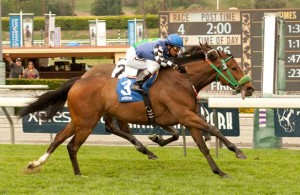 A really nice filly I had was Stormy Lucy, by Stormy Atlantic. She was a medium sized filly who won the Grade 2 Santa Ana stakes at Santa Anita. The owner gave I believe around $23,000 for her in a sale. She was easy and nice to be around but a bit ticklish to groom and would play around in the stall. She showed that she could run in her works so we ran her in a Maiden Allowance first time out and she ran fourth. Then she won a $30,000 Maiden Claimer at Santa Anita but ran poorly next time in a Starter Allowance. She came back breathing badly, so we did a throat operation on her to help her wind and then shipped her to Golden Gate and she won her Starter
A really nice filly I had was Stormy Lucy, by Stormy Atlantic. She was a medium sized filly who won the Grade 2 Santa Ana stakes at Santa Anita. The owner gave I believe around $23,000 for her in a sale. She was easy and nice to be around but a bit ticklish to groom and would play around in the stall. She showed that she could run in her works so we ran her in a Maiden Allowance first time out and she ran fourth. Then she won a $30,000 Maiden Claimer at Santa Anita but ran poorly next time in a Starter Allowance. She came back breathing badly, so we did a throat operation on her to help her wind and then shipped her to Golden Gate and she won her Starter
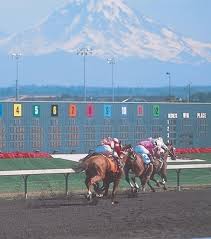 Allowance there at big odds, I think she paid $64. From there she just carried on improving and she eventually won over $500,000 in prize money.
Allowance there at big odds, I think she paid $64. From there she just carried on improving and she eventually won over $500,000 in prize money.
Another of my favorites was a horse called Michael The Man who I owned myself and named after my son. He wasn't a stakes horse but he was a real neat horse to have, he was a good consistent claimer and it seemed like every time you were a little short of money he would pop up and win a race for you. He was a real mellow, pretty horse, easy to train and he ran well every time I ran him, once he got the hang of things. Having said that, the first time I ran him for Maiden $12,500 at Emerald he got beaten 12 or 15 lengths, but I knew he had ability and was bred to go long so I brought him down to Golden Gate and he got good there on the Tapeta. I sold him privately for $55,000 and he eventually won close to $200,000.
TBP: Do you have many horses who want to go a distance?
FL: Yes, obviously many horses are sprint bred but I do have several horses who are more suited to going long. It is frustrating that there aren't more distance races being run, the race program seems to be producing shorter and shorter races, I'd like to see more races run over a mile and a mile and a quarter, I think there are plenty of horses who need those kinds of races. If I had my own Thoroughbred track, aside from 2 year old races early in the year the minimum distance would be six furlongs. I don't like to see so many of these five and a half and four and a half furlong races, I think they are hard on horses and longer races where the early pace isn't so fast are better for them.
 TBP: What is your opinion of the Tapeta track at Golden Gate and synthetic tracks in general?
TBP: What is your opinion of the Tapeta track at Golden Gate and synthetic tracks in general?
FL: I like the Tapeta track a lot, I think it's a great track to train and run on. It gets horses very fit - you can bring up a horse that's been training at Santa Anita and they will come up short on this track, but you can train a horse on the Tapeta here and take them anywhere and they will be fit enough. I know they have been taking these synthetic tracks out and going back to dirt, but I think it's a shame that the Tapeta wasn't the first choice of synthetic at Santa Anita when they switched from dirt to synthetic a few years ago. I'm not sure why they didn't choose Tapeta at Santa Anita. It might have been a different story for synthetic tracks if Tapeta had been the choice for synthetic tracks in general.
The Tapeta track at Golden Gate is different and faster now though now compared to how it was when they put it in. They weren't supposed to renovate it much apparently, but they renovate it a lot now and the track seems faster now.
TBP: How do you feel about the state of thoroughbred racing at this time?
FL: What concerns me is the horse population, there is a shortage of horses everywhere, which is a product of a shortage of owners of course. We need to get more people educated and involved in racing. It's easy to give racing a black mark when people see a horse get hurt on the track, but what people don't see is all the good things that happen and how well the horses are cared for and looked after. I like to bring people to my barn and show them the barn and the horses and answer their questions, because most people have very little understanding of it all and are pleasantly surprised and impressed when they see how well these horses are looked after. I'm proud of how I take care of my
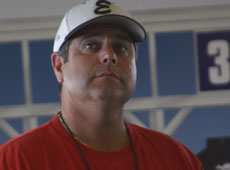 horses and I'm proud of how they look. Emerald Downs runs some good programs to attract owners and this kind of thing, but not too many tracks do the same. I'd like to see more of that and I'd like to see more partnerships and syndicates around, some of my best owners were people who started off with small percentages of a horse in a partnership or syndicate. I used to go to Santa Anita when I first started going racing and there would be over 20,000 people there on a normal weekday afternoon. You never get that kind of crowd now unless it's a major situation like Big Cap day. It's a big concern.
horses and I'm proud of how they look. Emerald Downs runs some good programs to attract owners and this kind of thing, but not too many tracks do the same. I'd like to see more of that and I'd like to see more partnerships and syndicates around, some of my best owners were people who started off with small percentages of a horse in a partnership or syndicate. I used to go to Santa Anita when I first started going racing and there would be over 20,000 people there on a normal weekday afternoon. You never get that kind of crowd now unless it's a major situation like Big Cap day. It's a big concern.
TBP: Have you had good success finding homes for horse from your barn that come to the end of their racing life?
FL: Yes and there are a lot of groups for this now, a lot more than there used to be, that take and retrain racehorses. Emerald Downs has a day when they bring back horses that used to race there and are now doing other things like hunter jumping or dressage, people like to see them doing well in a different sphere.
TBP: Finally Frank please tell us about your help, have you had some people who have been with you for a while?
FL: Well a great man who had been with me for eighteen years sadly passed away last year, Juan Juerta was his name, he was my foreman and had done a wonderful job. A lot of my gallop boys and grooms have been with me for ten years or more. Dennis Snowden who breaks a lot of horses for me is now my assistant/foreman at my Emerald Downs barn, he's a great horseman and a big help.
TBP: Thanks Frank!
